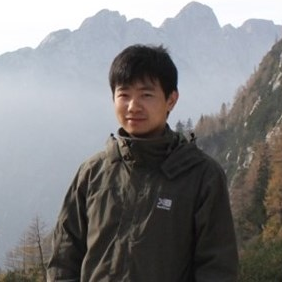Soil and Water Pollution: Causes, Effects and Control
A special issue of Sustainability (ISSN 2071-1050). This special issue belongs to the section "Pollution Prevention, Mitigation and Sustainability".
Deadline for manuscript submissions: closed (10 December 2023) | Viewed by 2388
Special Issue Editors
Interests: soil and water pollution; heavy metals pollution; hydrogeology; hydrological processes and pollutant migration; health risk evaluation
Interests: environmental chemistry; health effects; emerging organic contaminants; persistent toxic substances; monitoring techniques
Special Issues, Collections and Topics in MDPI journals
Special Issue Information
Dear Colleagues,
Soil and water are crucial to the Earth's surface, but they are dramatically affected by human activity. During production and consumption, a large amount of industrial waste, domestic waste, sewage, etc., are released, causing soil and water pollution. Accordingly, conditions are deteriorating globally, especially in developing countries, and sustainable development is severely threatened.
Soil pollution is closely related to water pollution (surface water and groundwater). Soil is able to accumulate and purify pollutants, which protects water, but it also releases and transmits pollutants into waters by leaching and migration, causing water pollution. Thus, soil is a potential source and transmission passage of pollution for water bodies. Therefore, soil pollution prevention and control play an important role in the prevention and control of water pollution.
This Issue focuses on the advances of soil and water pollution research, including their causes, pollution mechanisms, environmental effects and sustainable development strategies, in order to determine the environmental problems we face at present and to promote the sustainable development of the Earth’s surface.
The suggested themes covered in this Special Issue include (but are not limited to):
- Pollution characteristics of soil and water within different geological media and their migration and transformation processes;
- Causes of organic and inorganic pollutants and their environmental behavior;
- Management and remediation of pollution problems in different water and soil environments;
- Evaluation of the impact of soil and water pollution on human beings, environment and ecology;
- Control of soil and water environment problems for sustainable development.
We look forward to receiving your contributions.
Dr. Wei Liu
Dr. Wei Chen
Guest Editors
Manuscript Submission Information
Manuscripts should be submitted online at www.mdpi.com by registering and logging in to this website. Once you are registered, click here to go to the submission form. Manuscripts can be submitted until the deadline. All submissions that pass pre-check are peer-reviewed. Accepted papers will be published continuously in the journal (as soon as accepted) and will be listed together on the special issue website. Research articles, review articles as well as short communications are invited. For planned papers, a title and short abstract (about 100 words) can be sent to the Editorial Office for announcement on this website.
Submitted manuscripts should not have been published previously, nor be under consideration for publication elsewhere (except conference proceedings papers). All manuscripts are thoroughly refereed through a single-blind peer-review process. A guide for authors and other relevant information for submission of manuscripts is available on the Instructions for Authors page. Sustainability is an international peer-reviewed open access semimonthly journal published by MDPI.
Please visit the Instructions for Authors page before submitting a manuscript. The Article Processing Charge (APC) for publication in this open access journal is 2400 CHF (Swiss Francs). Submitted papers should be well formatted and use good English. Authors may use MDPI's English editing service prior to publication or during author revisions.
Keywords
- soil and water pollution
- pollution mechanisms
- environmental effects
- sustainable development






